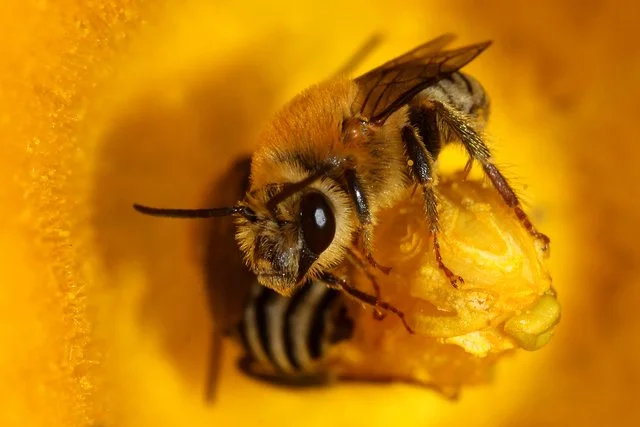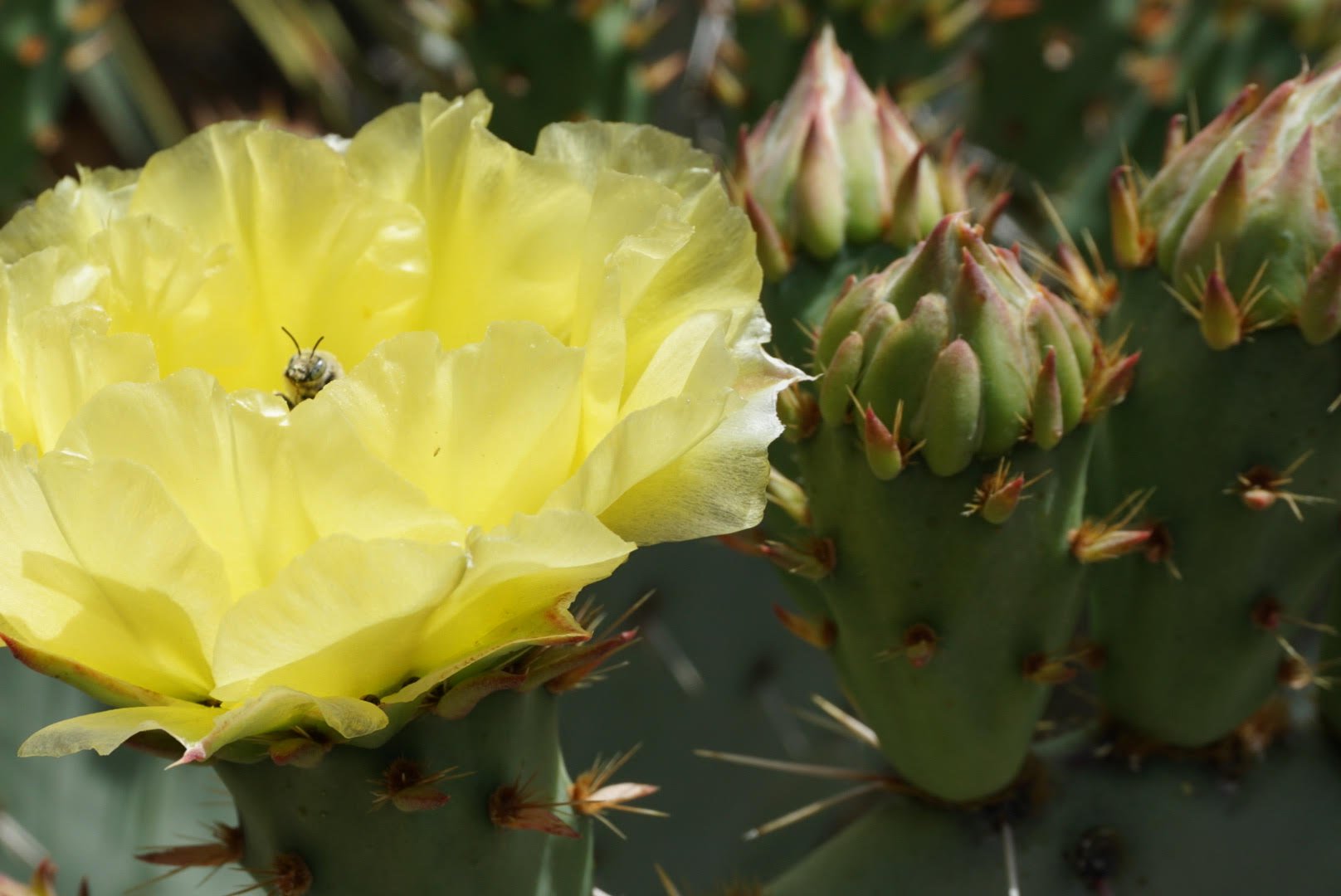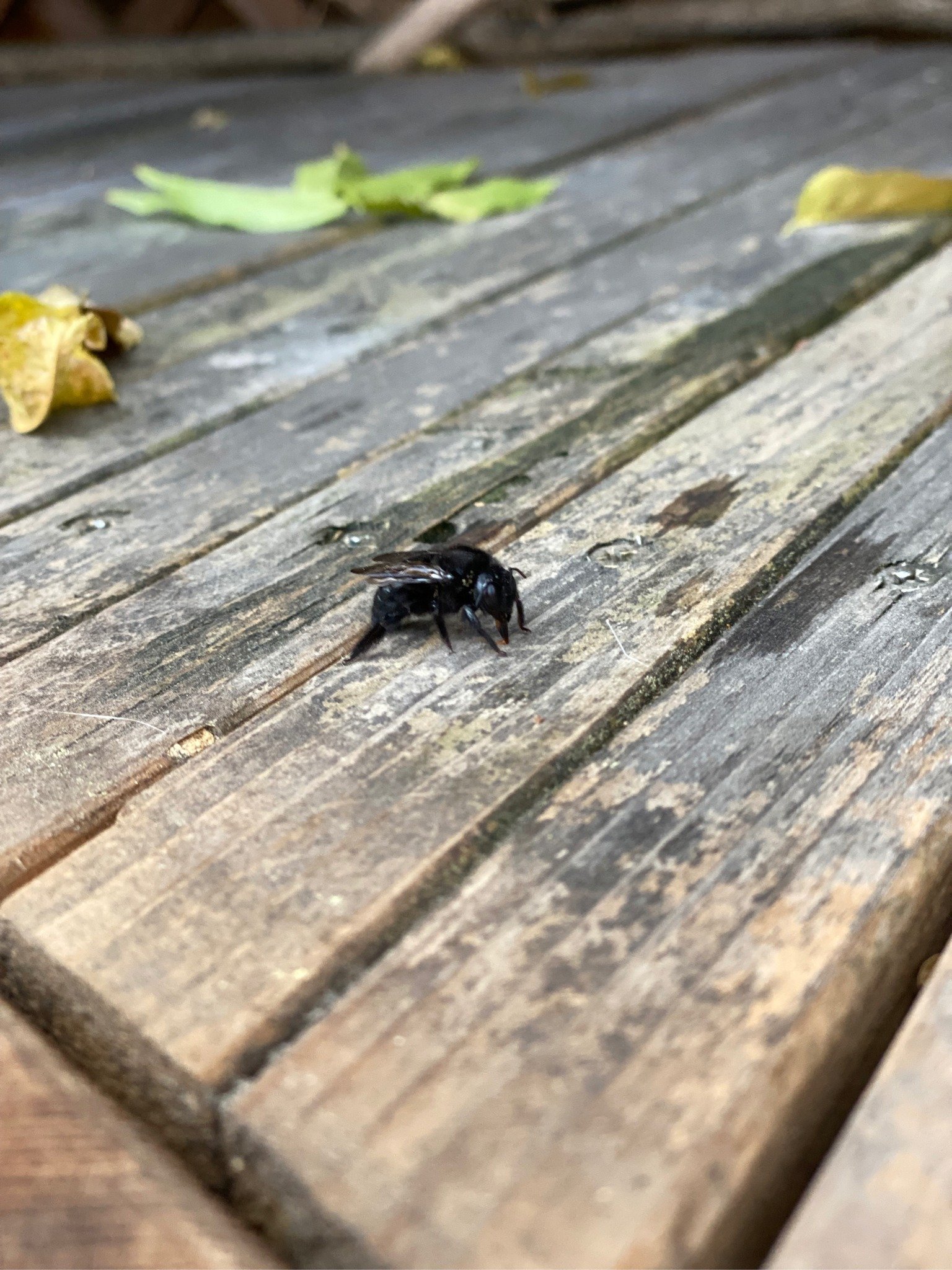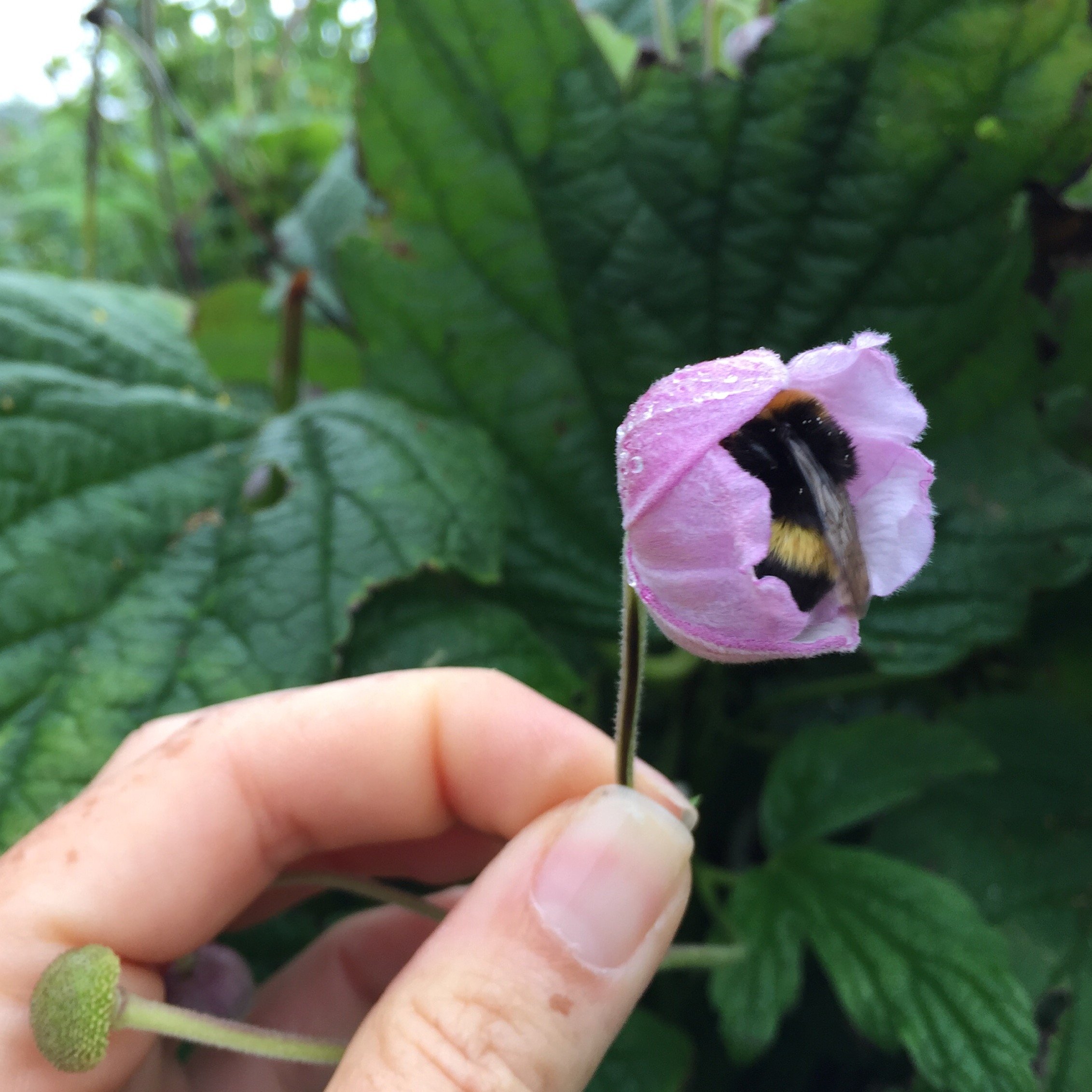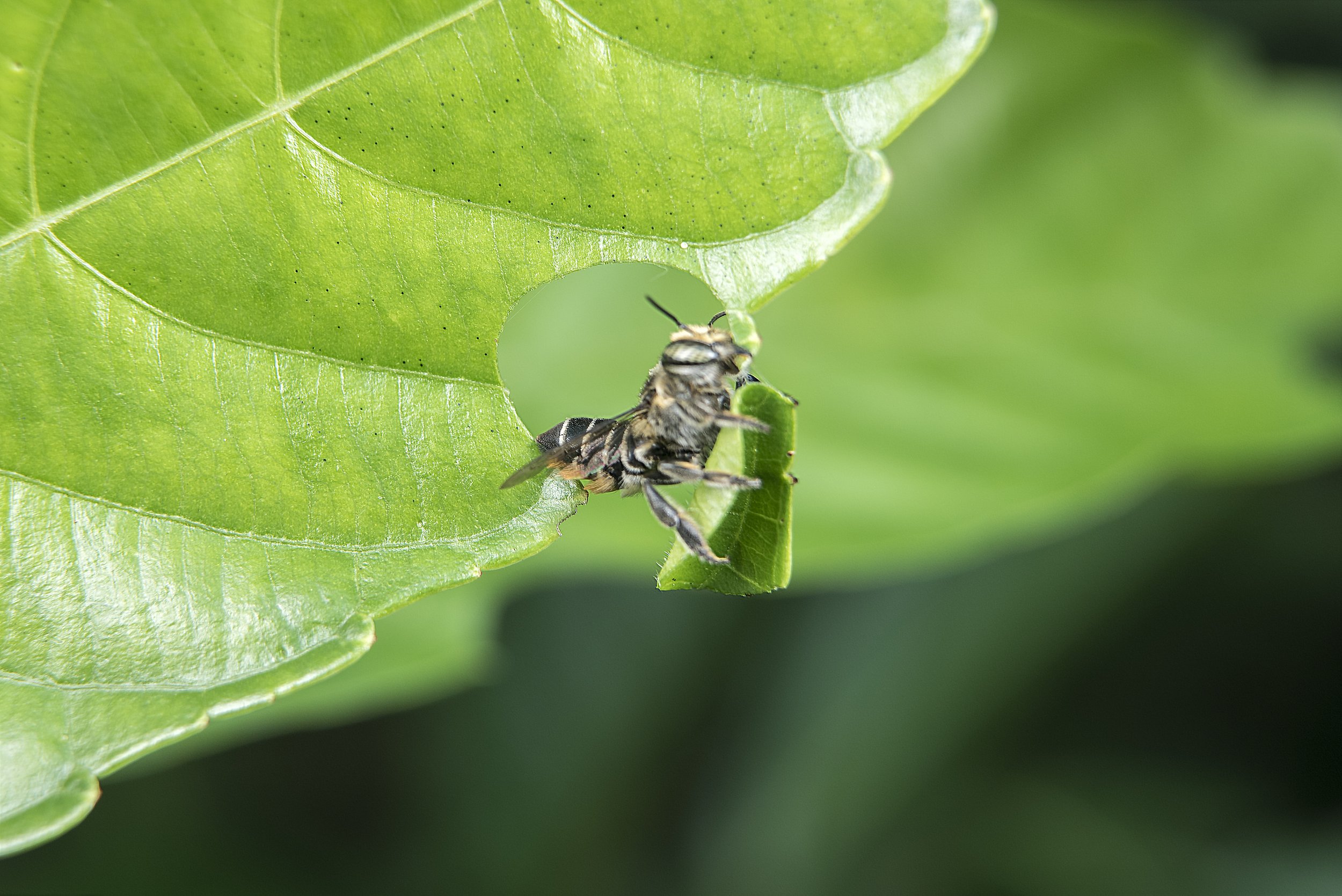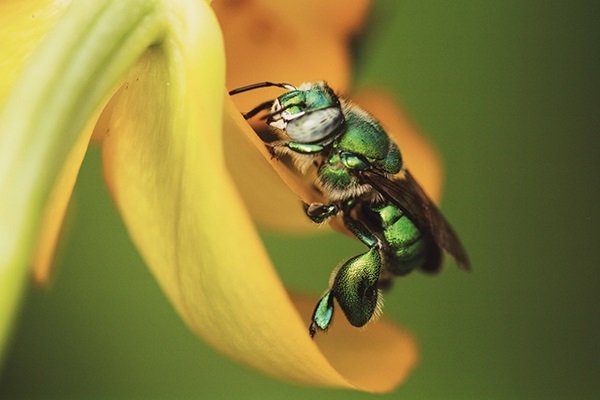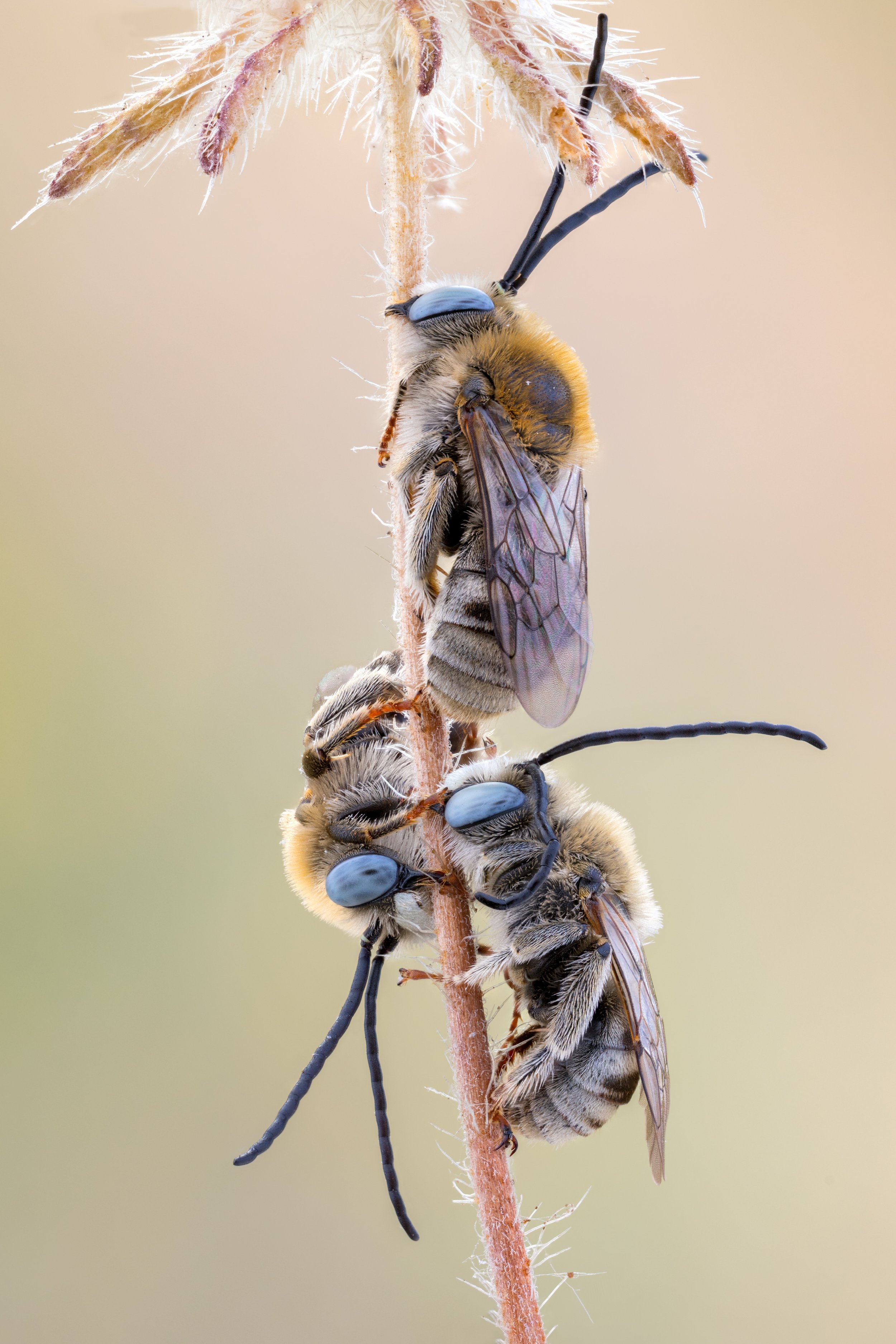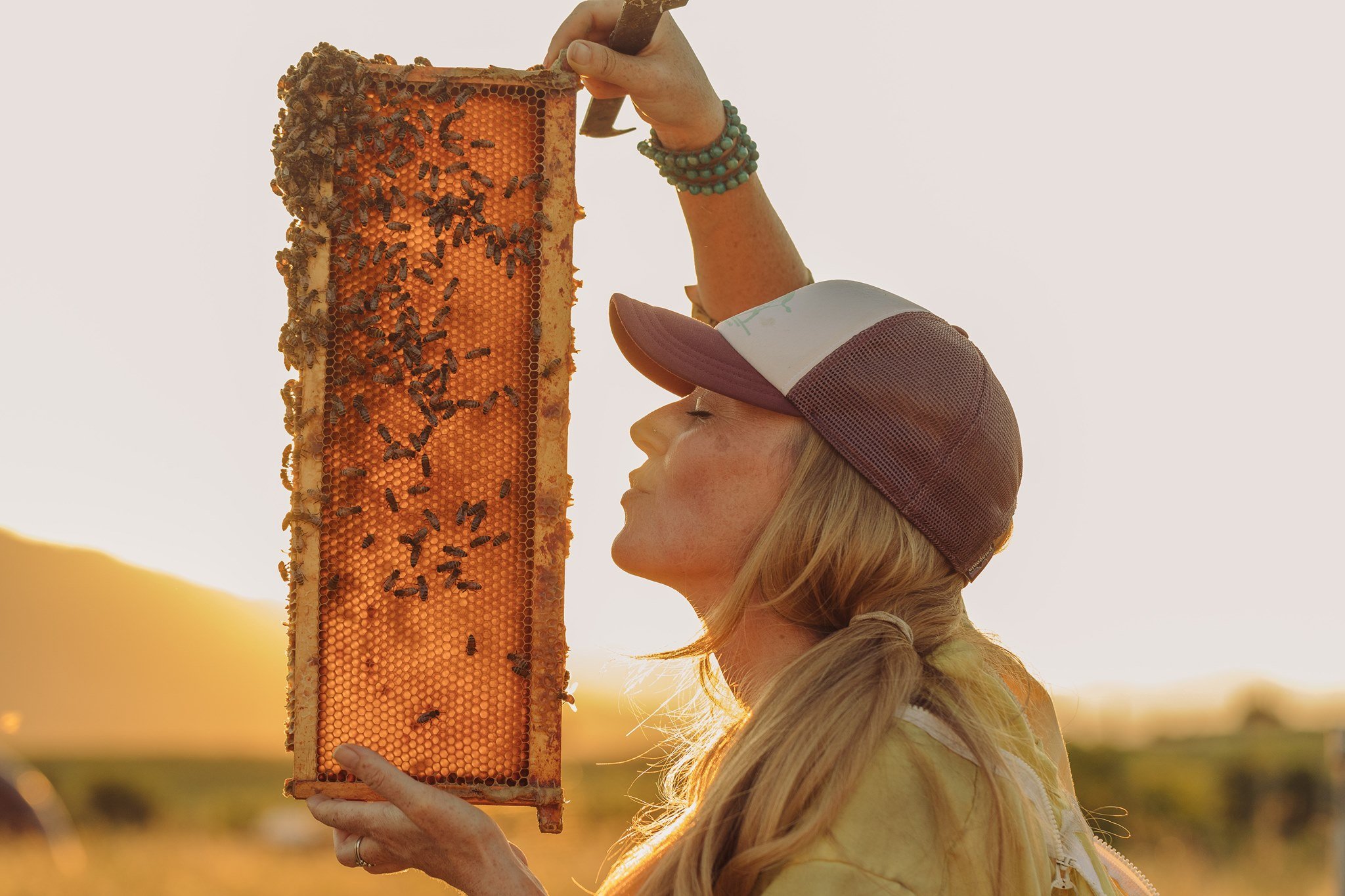Bee Girl's Top 10 Favorite Bees
This year is BGO's 10 year anniversary! For the rest of the year, I am going to be sharing a few "Top 10" lists (10 favorite flowers for bees, our top 10 collaborations, and our top 10 highlights of the last 10 years).
I'm going to start with my "Top 10 Favorite Bees."
Well, all bees are my favorite, but these are my most favorite.
#10 Squash Bee, Peponapis pruinosa
I love this bee because they are a brilliant golden color, they look very similar to honey bees, but have flatter abdomens, and are extra fuzzy. I love them because they wake up super early in the morning (with the sunrise). I love them because the males sleep in the squash blossoms, you know they are in there when you pinch a closed blossom and it buzzes at you. I love them because myself and some kindergarteners in my bee science summer camp were the first to officially find this bee species in Oregon! And I love them because they keep randomly showing up on the ODOT vernal pool project, where there are no squash, which makes no sense, and reminds me I have so much more to learn.
#9 Cactus Bee, Diadasia rinconis
I love this be because it's completely adorable. They are small and fuzzy and live their tiny best lives in the cactuses of the Southwestern US and Northern Mexico. I love them because they will peak out at you like puppies from cactus blossoms and it's just about the cutest thing I have ever seen. I love them because when they load themselves down with so much pollen, I have zero clue how they can fly. They get packed with the stuff, and just look like tiny flying Cheetos.
#8 Large Carpenter Bee, Xylocopa
I love this bee because they are HILARIOUS! The males are extraordinarily territorial, and they will fight you for their woman. Gardeners may recognize these non-so-gentle giants from getting punched in the face by them, or just generally harassed by them. I always have had one male in my backyard in the spring and summer, and I name him Ferdinand – like the bull. Last year, when I covered my backyard with phacelia and other such pasture plants, I had about 5 or 6 males. Ferdinand left me alone to wrestle with Ferdinand I, II, III, IV, etc. There is almost nothing more entertaining than watching them – they are basically small gladiators (without stingers – no male bee has a stinger). They will pull each other out of the air and try to pin each other to the ground. They head butt each other, as well as honey bees – and any other bee, off of flowers. They will also follow you around the yard and just stare at you in the face with their giant green, psychedelicy eye balls. I think they are saying some pretty aggressive things, but I just laugh.
And the females! I love them because they remind me of the Garthim from The Dark Crystal. She is a shiny slick-shelled black giant and as loud as a small helicopter. She is the largest bee in the US. She makes small nests in old wood for her babies – which are a geometrically perfect circle. She will lay a small handful of giant eggs in the summer. While a honey bee queen will lay up to 2,000 tiny eggs in a day, a female carpenter bee will only lay around 10 a year, and they are a sizeable portion of her body size (around 15mm). Also unlike honey bees which live for a few weeks, a female carpenter bee will live for 2-3 years. She will also help her sister-friends out, and provision nests next to hers with pollen and nectar for the young.
This might be one of the reasons these bees are so resilient, and their numbers remain stable. All-in-all, I love these bees because they are the most badass of bees, IMHO.
#7 Mason Bee, Osmia
I love this bee because many of the males have giant mustaches. These giant mustaches can only be seen with a microscope, so I guess they are actually tiny, which makes them even cuter. I also love them because both the male and the female come in a rainbow of colors, and look like tiny gems that bejewel the flowers they visit. Many people know about the “blue orchard bee,” but these beauties also come in green, red, purple, black, copper, and multi-toned iridescent. I’ve seen all of these colors with my own eyes, thanks to our work at the ODOT Vernal Pool Restoration project. I also love that one of the ways you identify them (under a microscope) is by looking for an adorable middle “toe” called an arolium that acts like a suction cup. Honey bees have them, too. It’s how bees can hang onto your windshield at 60 mph.
#6 Bumble Bee, Bombus
Who doesn’t love bumble bees?! It’s literally impossible for them to fly (according to the laws of physics and their wing to body ratio) but they do it anyway. The queens are gi-freaking-gantic, and are most findable in the spring (while new queens gather the first nectar and pollen to provision their nests before she raises some kids to do it for her) or in the fall (when newly emerged queens look for a place to overwinter). The fancy word for this is hibernaculum. Sounds highly scientific, but it’s not. It’s just a pile of leaves in your backyard that you didn’t blow away or rake up – right?!
* This is me staring at you – chin lowered, one eyebrow raised, knowing slight smile *
It’s OK, now you know, and you’ll do it right next time.
I love them because they are impossible in so many ways – including identification. You cannot tell them apart from their markings alone. Many times a bumble bee will have a color variation identical to a bee of a different species and the only way to tell them apart is by measuring distances between lines on their face or looking at their private parts. Seriously.
I love them because they remind me that I chose the right career path - because there are people out there who truly love to look at bees’ privates, but I really love to plant flowers in fields for bees for them to happily put their privates to work and make more bees.
I love them because they remind me of Dr. Robbin Thorp, one of the kindest people I’ve ever met, who spent his life researching and educating people about bumble bees. He welcomed this beekeeping, honey loving girl into the world of native bees, and was a model for unpretentious science.
#5 Leaf Cutter Bee, Megachile
Two words – swoopy. butt. I can’t 😂😂😂
These bees work harrrrrrrrrrrrrrrd..!!! They cut perfect circles and ovals out of leaves to back perfect little leafy cribs for their bee babies. Seeing a leaf cutter bee flying with a leaf roll tucked under her belly is just about the most adorable thing ever – adorable like watching a fawn take her first steps, or watching a baby black bear wrestle it’s mom’s face. And then the precision and speed at which they fly their leaf roll into their nest cavity is nothing short of stupefying.
They have giant belly brushes that are just about as big as the rest of them. This is where the swoopy butt comes in – they have to make room in space and time for all that pollen to go on their belly brushes – so their butt just points straight up. And who knows why, but I squeal with joy every 👏🏻 time 👏🏻 I 👏🏻 see 👏🏻 it 👏🏻
#4 Carder Bee, Anthidium
I love these bees because they look like tiny tigers. They are pretty much bald with yellow and black stripes on their exoskeleton and friggin awesome face markings. I have a few of their cuckoo bee cousins, as well, in our collection from the #ODOTpollinators project, which are just as fantastically wild looking.
I also love this bee because of one of its weirdest habits. This bee pluck HAIRS off of PLANTS – yes plant hairs – to craft its little nest.
If you’ve never seen a tiny winged tiger with a puff of plant hairs in its mouth, you haven’t lived.
#3 Orchid Bee, Euglossini
I love these bees because they have markings on their clypeus (a plate on their face) that look like pig nostrils – so these bees look like tiny flying metallic green piggies.
Note: they can also be blue, purple, red, gold, copper, or a swirl of two or three of these fantastical colors.
They are also super grumpy, and all business; I just love their “can do” attitudes.
Want to know what they are busy doing? Unless you already know… you wouldn’t guess in a million years.
The male bees have pouches on their back legs that look like large, solid corbiculae (aka, pollen pants). But this is not for pollen, noooooo, it’s for lovely orchid smells that he gathers from flowers like vanilla. He gathers scents for weeks and months and traps them in his leg pockets until he’s ready for sexy time. Then he flies to a hole in a tree, paints the perfume on the wood and then does a fun little dance and waits for a special lady bee friend.
And sometimes, when he’s out harvesting his smelly, one particular flower, the male bucket orchid plays an interesting game with Mr. Piggy. The bee goes in one entrance which leads him to a pool of nectar. He gets all stickied up, then crawls his way up to the exit where the flower traps his little body and sticks two pollen packets to his back, then safely lets him go, hoping and wishing that the next flower he flies to will be a female bucket orchid and flower reproduction will be facilitated.
#2 Long-Horned Bee, Eucerini
I love this bee because they love the flowers that we plant for them, and that makes me feel like I’m doing my job right 🤓 they are the most diverse tribe in the family Apidae, so it could be just sheer luck of numbers, because they are everywhere. But I like to tell myself we’re nailing bee habitat at the #ODOTpollinators project, #regenerativebeepasture project, and #beefriendlyvineyards project.
I also love this bee because the males love to sleep together in a cuddle puddle inside of closed flower blossoms at night. If you have cosmos in your yard, sneak out first thing in the summer, and take a peak. I have also found them wedged in the petals of sunflowers.
Lastly I love this bee as it is the most affectionate bee. Want to know why the males have such long “horns” aka antennae? It for giving their special ladies an antennae massage when they are having sexy time 😊 Don’t believe me? Ask the internet.
#1 Honey Bee, Apis mellifera
Obviously.
I love honey bees in a way that can’t be expressed with words. I don’t remember when I started loving them, or why, I just always have.
But I can tell you my favorite thing about them!
It’s that they sting.
Every time I get stung (or you get stung), it has nothing to do with the bee. It’s your fault, or my fault.
Taking blame on ourselves and admitting when we are wrong is an nearly impossible task for many humans. When someone, or something, hurts you – or something doesn’t go your way, is it easier to say, “It’s your fault,” or “I’m sorry.”
I know which one I default to!
When I stub my toe I curse the heavens and immediately roll down the list of who put this f&*$#@ box, chair, or stair step in my f^&%@! way!! But it’s my fault, I wasn’t looking where I was going.
Getting stung HURTS! But no bee wants to die, she is always protecting herself, or her family – from you (or me) – because we did something we shouldn’t have done and caused that reaction.
We should pause, reflect, and apologize/forgive/nurture – internally or externally, ourselves and others.
All the time, for so many things, way more than we do.
And I’m forever grateful for honey bees for selflessly teaching me this lesson, time and time again.
Support our next 10 years of work with a donation to our 2021 capital campaign - more information and donor button here: https://give.classy.org/BGO10years

